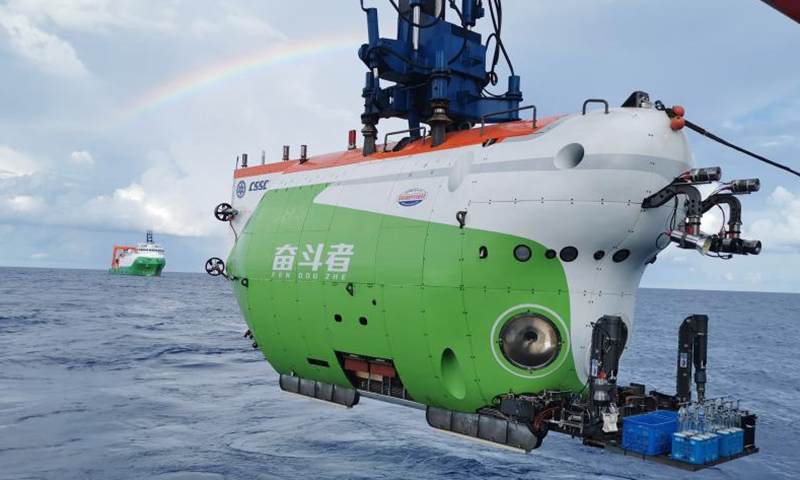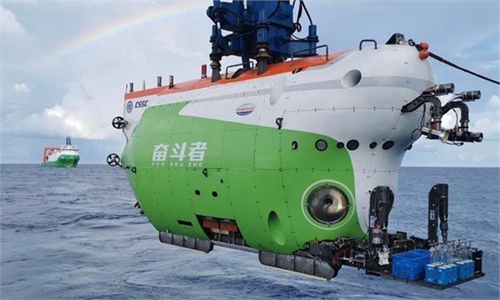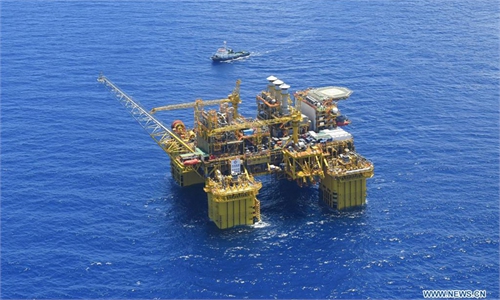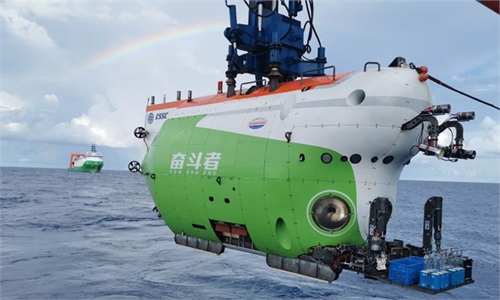SCI-TECH / DISCOVERY
Teamwork of manned and unmanned submersibles marks China's major strides in deep-sea exploration

The first full-depth deep-sea manned submersible of China. Photo: IACAS
China has delivered a successful coordinated deep-sea exploration trial with the country's unmanned submersible Haidou-1 and the manned Fendouzhe, or Striver, marking major strides from "entering" to "expediting" in the field.
With the help of Striver, Haidou-1 has become the first in the world to conduct a large-scale near-bottom topographic survey in the western depression of the Challenger Deep during a scientific expedition to the Mariana Trench.
The Challenger Deep is the deepest region of the ocean, at approximately 11,000 meters, data showed.
The fish-like, autonomous remotely operated vehicle of Haidou-1 was developed by the Shenyang Institute of Automation under the Chinese Academy of Sciences.
Tang Yuangui, chief engineer of the vehicle, said it has three control modes - autonomous mode, remote control mode and mixed mode - enabling it to flexibly respond to extreme marine conditions of all depths, and carry out scientific research activities, including abyssal exploration, the China Central Television (CCTV) reported.
Experts believe that the Haidou-1 has shown significant advantages in application areas including target locating, seafloor topography detection, real-time image broadcasting and identification of target objects, which has provided a very effective means to support the 10,000-meter abyssal scientific research activities.
The Haidou-1 has broken several world records for unmanned submersibles, including the first full-coverage acoustic cruise of the western depression of the Challenger Deep, a diving depth of 10,908 meters, and near-seabed navigation distance of more than 14 kilometers, according to Tang in October.
Meanwhile, its partner the Striver has also completed its first regular exploration application and conducted trials at 10,000 meters underwater for deep-sea equipment, CCTV reported.
The Striver has made 28 dives from 7,700 to 10,900 meters deep so far, seven of which have exceeded the 10,000-meter mark. It also conducted research operations in the deepest area of the Challenger Deep, with 18 scientists participating in the dives for the first time.
Zhang Yu, a researcher of marine microbiology at Shanghai Jiao Tong University, noted that the Striver is mainly tasked with two things, providing support for deep-sea equipment trials and for scientists on diving voyages to conduct comprehensive studies, data and sample collections in geology, biology and chemistry.
The manned submersible successfully passed its comprehensive performance evaluation in July, and set a national record by diving to a depth of 10,909 meters in the Mariana Trench in November 2020. Enabled by several deep-sea technologies involving materials, energy supply and communications, Striver represents the country's growing comprehensive strength in the field of marine high technology.
The coordinated work of the unmanned and manned submersibles this time marks a new phase in China's deep-sea exploration field, experts said. Taking advantage of each of their strengths, such as Haidou-1's capability to detect large areas of the seabed and Striver's fine filming technologies and robotic arm sampling, the efficiency of deep-sea expeditions will further be enhanced.
Global Times



